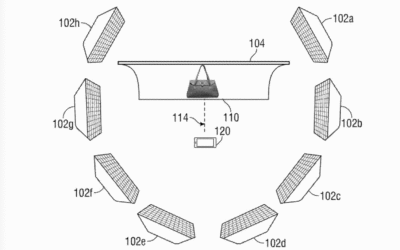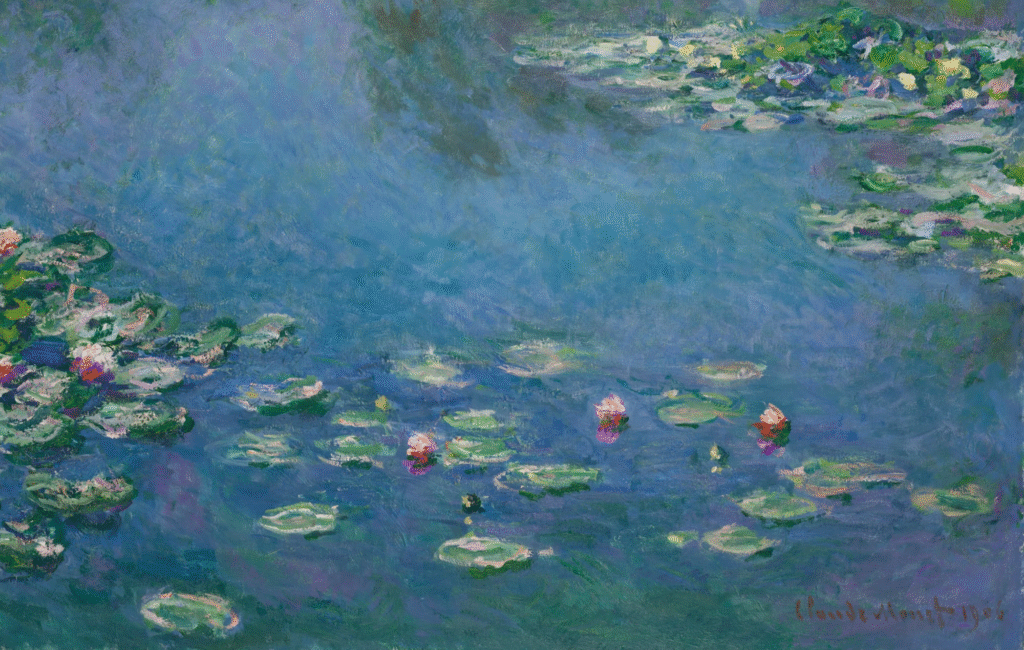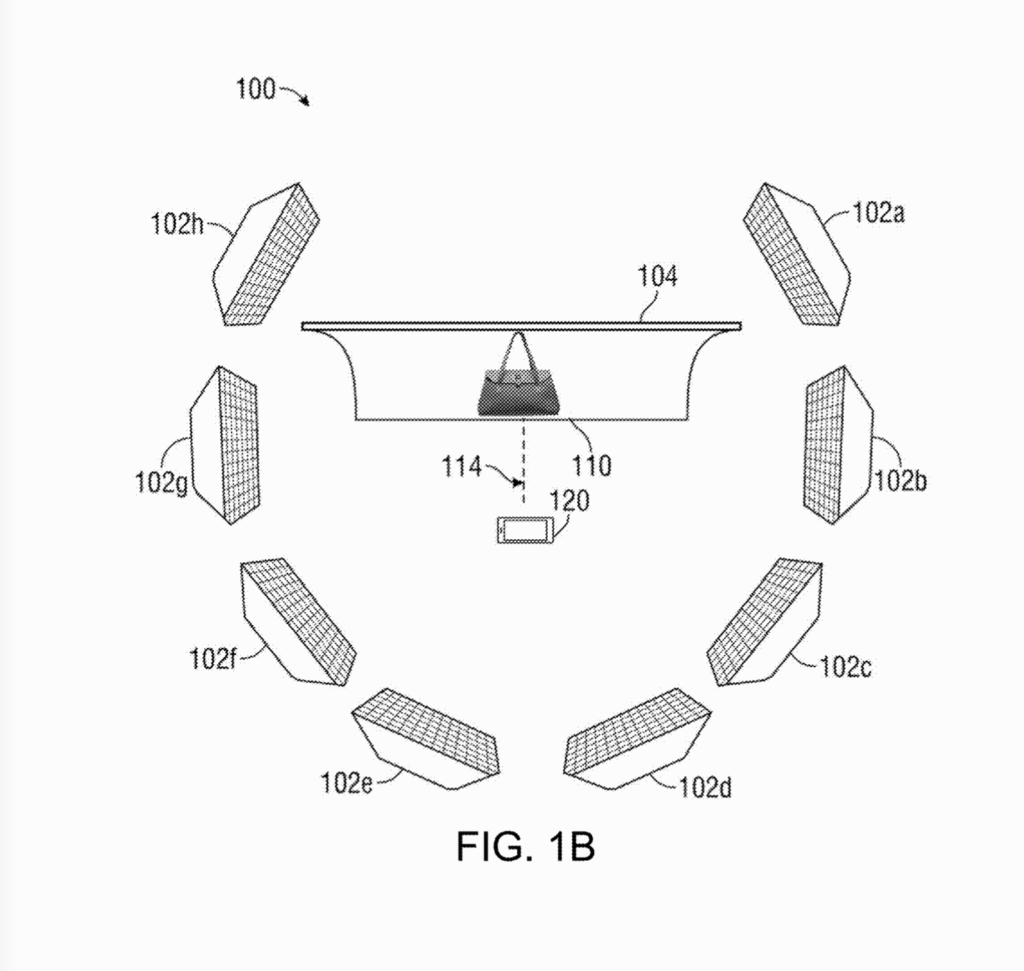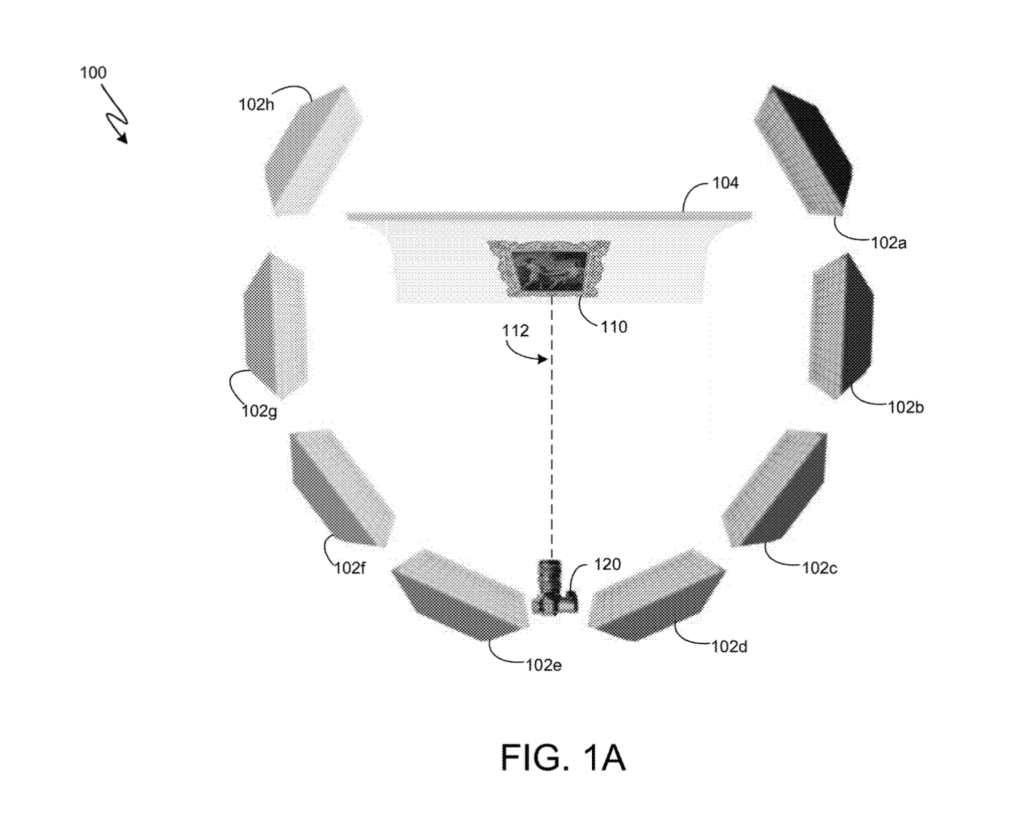Automating Aesthetic Intelligence: the Usability of Advanced Data Extraction
In an era where data-driven insights are transforming traditional disciplines, the intersection of art analysis, psychology, and neuroaesthetics presents an unprecedented opportunity to deepen our understanding of creative expression. This publication marks the first step in a broader research program aimed at harnessing computational methods to decode the psychological processes driving the language of artistic creation. By linking the psychology of art with neuroaesthetic insights, our work aims to reveal the hidden behavioral signatures embedded in every artwork—not through direct examination of brain activity, but by deciphering the outcomes manifested in the creative process.
Our inquiry is driven by the recognition that art is not merely a visual product but a complex interplay of cognitive, emotional, and motor processes. We propose that certain subconscious patterns reflecting the artist’s inner world may be more effectively identified by analyzing the works produced through these processes, rather than focusing solely on the biological structures that generate them.Traditional methods of art analysis have largely relied on subjective interpretations and qualitative assessments. In contrast, our approach integrates rigorous computational modeling with advanced data extraction techniques, enabling us to quantify aspects of artistic behavior that were previously elusive. The development of our patented system, which forms the foundation of this research, exemplifies how a comprehensive, automated framework can revolutionize the authentication of artworks and enhance the security of the art market.
This prologue sets the stage for a detailed exploration of our methods and findings. By situating our work at the confluence of art psychology and neuroaesthetics, we hope to not only advance the scientific study of aesthetics but also to lay the groundwork for innovative, technology-driven solutions in art authentication and market security. The journey outlined in this article is a pioneering effort to redefine how art is analyzed and appreciated in the digital age, fostering a new era of creative data solutions that honor both artistic legacy and contemporary innovation.
Introduction
The intersection of artistic production and psychological profiling remains a largely underexplored territory within empirical aesthetics. While traditional approaches have privileged qualitative interpretations of artistic intent and stylistic evolution, the increasing availability of high-resolution digital reproductions and computational tools opens new avenues for extracting behavioral markers embedded in the material execution of artworks. This paper posits that specific elements of artistic behavior—such as brushstroke frequency and directionality, chromatic blending modalities, and spatial compositional strategies—may serve as latent indicators of psychological and personality traits unique to the artist.
We hypothesize that, when systematically quantified and cross-compared, these formal attributes constitute a behavioral signature that reflects aesthetic preferences and potentially stable cognitive-affective dispositions. Through relational inference modeling applied to a sufficiently large corpus of works attributed to a single author, it becomes theoretically plausible to construct a dynamic map of artistic personality. Such a map would not rely on explicit self-report or verbal data but emerge organically from patterns of visual decision-making inscribed in the work itself.
If validated, this framework may pave the way for advanced analytical systems capable of discerning and articulating the aesthetic taste and psychological profile of an artist through a data-driven, non-invasive methodology. The implications extend beyond individual profiling, touching on broader questions in the psychology of creativity, authorial identity, and the computational understanding of aesthetic cognition.
Historical Background: Aesthetics and the Perception of Art in the 19th Century
The 19th century marked a critical turning point in the study of aesthetics, shifting the field from classical philosophical inquiry to more empirically grounded and psychologically informed perspectives. Rooted in the Enlightenment tradition, early aesthetic theory was largely concerned with the nature of beauty and the universality of taste since the very beginning with the work of Immanuel Kant and Alexander Baumgarten. However, as Romanticism and later Symbolism gained traction, the focus turned increasingly inward—toward the artist’s emotional world, subjective vision, and the expressive potential of form and color.
This period also saw the emergence of empirical psychology as a formal discipline, which began to influence aesthetic theory in substantive ways. Thinkers such as Gustav Fechner, often credited as a pioneer of experimental aesthetics, initiated the first attempts to quantify aesthetic experience by examining how viewers respond to visual stimuli such as symmetry, proportion, and contrast. These early efforts reflected a growing interest in understanding how perception, cognition, and emotion interact in the encounter with art.
Simultaneously, artists themselves were beginning to explore new modes of expression that pushed beyond academic conventions. Impressionism, for example, emphasized perceptual immediacy and the fleeting nature of experience, often privileging spontaneous brushwork and novel color juxtapositions over narrative content. These formal departures were not arbitrary; they emerged from deeply personal, and arguably psychological, shifts in how artists conceived of reality, time, and the self.
It is within this historical context that the groundwork was laid for a deeper interrogation of the links between artistic production and psychological structure. While 19th-century thinkers lacked the methodological tools we possess today, their questions remain surprisingly modern: Can the essence of an artist be discerned in their work? Do formal choices reveal inner tendencies? What is the relationship between aesthetic judgment and mental life?
Claude Monet – Water Lilies (1906)
Toward a Contemporary Model of Artistic Behavior
Building on this historical legacy, contemporary research must now move beyond surface-level analysis of style and genre, toward more granular and computationally precisemethodologies. With the advent of digital imaging, machine learning, and high-dimensional data analysis, we are now equipped to revisit these age-old questions through a new lens—one that treats the artwork not merely as a finished object but as a behavioral trace, a record of micro-decisions made by the artist across time and medium.
By systematically extracting features such as brushstroke density, chromatic layering, and spatial geometry from a wide range of artworks, it becomes possible to construct datasets that capture the implicit structure of artistic behavior. When these datasets are modeled relationally—accounting not just for isolated variables but for the way in which they interact and co-vary across different works—we can begin to approximate what might be termed an “aesthetic signature”.
Such a signature is not reducible to stylistic influence or cultural context alone. Rather, it emerges from a constellation of preferences, habits, and constraints that, taken together, reflect the artist’s psychological orientation toward the act of creation. Importantly, this does not require a deterministic reading of personality traits from visual forms, but instead allows for the construction of probabilistic inferences grounded in empirical data.

Claude Monet – The Japanese Footbridge (1899)
Neuroaesthetics and the Subconscious Foundations of Artistic Behavior
Recent advancements in neuroaesthetics—a field at the intersection of cognitive neuroscience, psychology, and art theory—have begun to shed light on how aesthetic experience is processed at the neural level. Core structures such as the orbitofrontal cortex, anterior insula, and the default mode network have been implicated in the evaluation of visual beauty, emotional salience, and imaginative projection (Chatterjee, 2011; Vessel et al., 2012). These areas are not only activated when we view art but also during the act of creation, suggesting that the artistic process itself is guided by a network of perceptual-emotional feedback loops that operate below the threshold of conscious deliberation (Zeki, 2001).
Brushstroke patterns, compositional rhythms, and chromatic decisions are often perceived as intentional stylistic choices. However, emerging evidence points to the influence of sensorimotor contingencies, embodied affect, and attentional biases that guide the hand before the mind fully formulates its intent (Freedberg & Gallese, 2007). In this light, the artist’s motor gestures become a physical trace of deeper neural computations—what might be described as aesthetic impulses shaped by both internalized taste and external perceptual-motor constraints.
Moreover, studies grounded in predictive coding theories suggest that the brain constantly generates hypotheses about incoming sensory input and adjusts behavior in accordance with anticipated rewards or emotional resonance (Friston, 2010). This principle can be extrapolated to explain why certain compositional strategies “feel right” to the artist: they align with the brain’s prior expectations of harmony, tension, and resolution. Thus, formal choices in art can be understood as dynamic interactions between unconscious neural priors and the evolving structure of the artwork in real time.

Claude Monet – Various Artworks – Color Usage
Aesthetic Perception as a Product of Historical Neuroplasticity
Yet neural processes do not unfold in a vacuum, as many other human structures thrive and are shaped by a bio-psycho-social environment the development of aesthetic preferences—and by extension, the neural pathways that support them—is inextricably linked to the socio-historical environment in which the individual is embedded. The 19th century concept of Volksgeist, or the “spirit of the people, ” can be fruitfully updated in this context: rather than a static cultural essence, it may be viewed as a collective cognitive ecology that shapes—and is shaped by—the perceptual and affective norms of its time (Shore, 1996).
Society, through its institutions, visual culture, and prevailing ideologies, modulates what is perceived as beautiful, provocative, or sublime. These collective norms are not only transmitted through education and imitation but also have the potential to shape neural development through mechanisms of plasticity and repetition. For example, prolonged exposure to certain visual motifs or symbolic structures during formative years may strengthen specific neural circuits associated with pattern recognition, emotional valence, or spatial organization (Immordino-Yang & Damasio, 2007).
From this perspective, it is not unreasonable to postulate the possibility of temporal neuroaesthetic drift: the idea that different historical epochs may give rise to distinct neurocognitive configurations of aesthetic perception. Just as language acquisition windows and socialization processes influence identity and behavior, so too might the aesthetic landscape of a given era shape the neural architecture underlying artistic judgment and production.
In my opinion the artistic personality cannot be fully disentangled from the historical moment in which it is formed. Neural predispositions, cultural narratives, and material conditions coalesce into a singular perceptual lens through which the artist views—and constructs—their world. As such, any attempt to map personality traits from artwork must remain sensitive to both the universality of neurocognitive mechanisms and the particularities of historical aesthetic regimes.
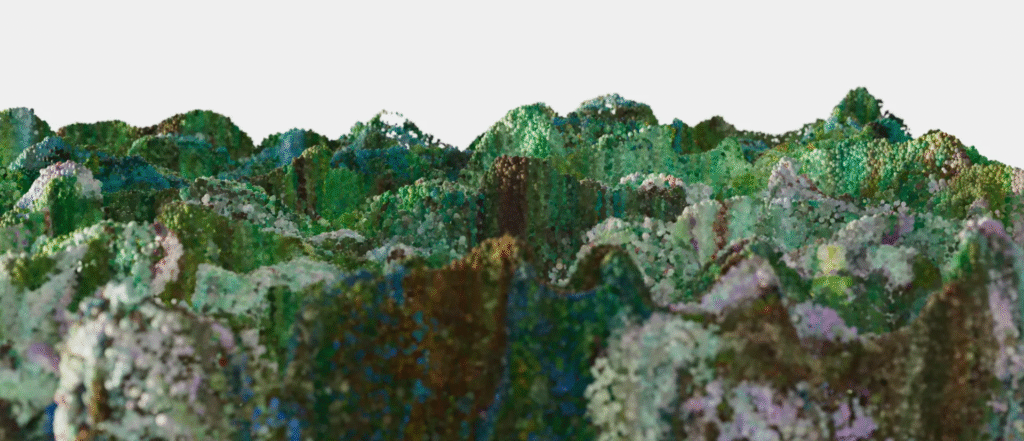
Claude Monet – The Japanese Footbridge – Color Spheres
Challenges in Data Extraction and Multi-Level Analysis in Artistic Production
The main challenge in applying pattern recognition to art lies in the inherently complex and multi-dimensional nature of data extraction. To fully understand the operations underpinning artistic practice, it is necessary to implement a comprehensive mapping, archival, and analysis of vast amounts of data. This endeavor involves delving beyond superficial metrics to explore compositional parameters, chromatic information, image-related features, and even volumetric and texture-based attributes, each carrying multiple layers of interpretation that must be considered to capture the intricacies of the creative process.
For example, every brushstroke requires a detailed examination, including the measurement of its dimensions, the pressure exerted, and the volume of oil applied. These physical parameters must be contextualized within the stroke’s placement on the canvas and its functional role within the overall composition. The pressure applied in a brushstroke may vary with the complexity of the subject—fine details such as hair might be rendered with lighter pressure compared to expansive elements like the sky. Moreover, during thedevelopment of our patented system (US-20250014381-A1), it was observed that variations in stroke length across different sections of a painting could be influenced by factors such as the artist’s arm length or wrist positioning. This finding suggests that physical ergonomics may interact with aesthetic decision-making, adding yet another layer to the already complex data structure.
The layered complexity of artistic data necessitates an analysis that addresses multiple dimensions simultaneously. Physical data, which includes metrics such as dimensions, length, pressure, and material volume, must be integrated with content-related information that describes the intended function of each brushstroke within the broader composition. In addition, an examination of spatial and gradient variations across the canvas is essential, as these variations reflect the dynamic relationship between the artist and the medium during the act of creation. A similar level of intricacy is evident in other data types extracted from paintings, including color profiles, volumetric measurements, and surface textures. Each of these elements demands a nuanced analytical approach in order to fully decipher its significance.
In forthcoming articles, I will detail the analytical value of these data types and present findings from tests conducted during the development of our patented system, as well as in the creation of the Quantumspace Archive and Authentication Algorithm. This multi-dimensional perspective underscores the critical need for advanced computational tools capable of managing and interpreting the rich, nuanced information embedded in every artwork. Our patent (US-20250014381-A1) exemplifies a pioneering effort in this domain, merging art analysis, pattern recognition, and computational modeling to provide a deeper understanding of the underlying creative process (Elgammal et al., 2017; US-20250014381-A1, 2024).
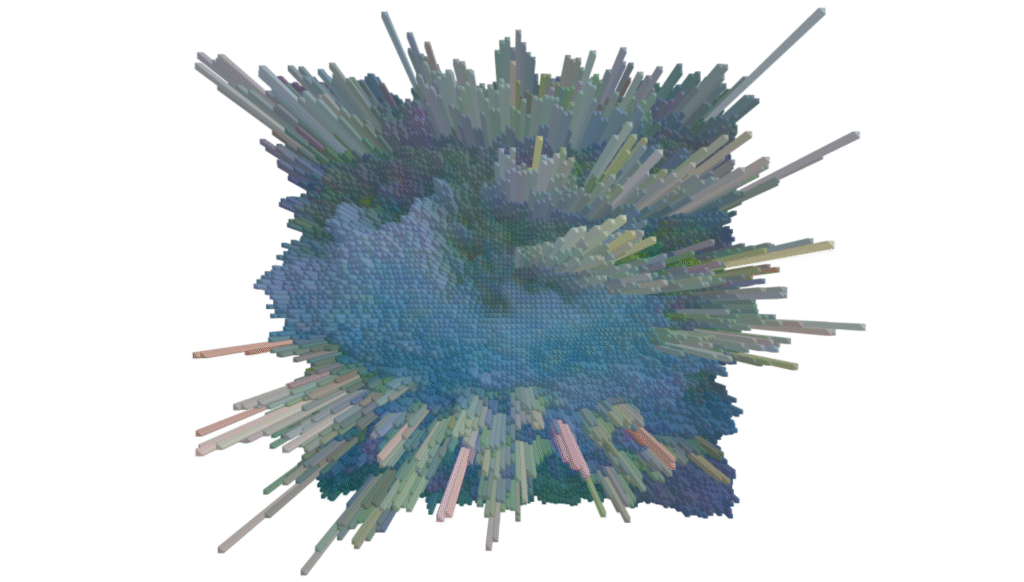
Claude Monet – Water Lilies – Zenital
Concluding Remarks on the Bibliographic Section
This analysis underscores the urgent need for developing an automated system dedicated to the extraction of complex, multi-layered artistic data and for the creation of a specialized database. The intricate nature of artistic production—encompassing physical metrics, compositional intent, spatial variations, and chromatic nuances demands a robust, automated framework capable of capturing and processing these diverse data types. Such a system would not only enable a comprehensive mapping of artistic behavior but also facilitate the advanced analysis necessary to forge a new era in art analysis.
Our work on the patented system (US-20250014381-A1) illustrates how the integration of art analysis, pattern recognition, and computational modeling can transform our understanding of the creative process. By automating data extraction and archiving vast quantities of nuanced information, the Quantumspace Archive and Authentication Algorithm opens unprecedented possibilities for authenticating artworks, ensuring the security of the art market, and preserving cultural heritage. This innovative approach can create a secure, data-driven ecosystem where every brushstroke and color modulation is systematically recorded and analyzed, thereby enhancing both market transparency and the reliability of art authentication protocols.
The evolution of such automated systems promises to redefine how we interact with art, merging the realms of technology, psychology, and art history into a coherent, dynamicframework. Ultimately, this will not only refine our analytical capabilities but also pave the way for novel strategies in safeguarding the art market, ensuring that authenticity and artistic innovation are preserved for future generations.
References
Chatterjee, A. (2011). Neuroaesthetics: A coming of age story. Journal of Cognitive Neuroscience, 23(1), 53–62. https://doi.org/10.1162/jocn.2010.21457
Elgammal, A., Liu, B., Elhoseiny, M., & Mazzone, M. (2017). CAN: Creative Adversarial Networks, Generating “Art” by Learning About Styles and Deviating from Style Norms. arXiv preprint arXiv:1706.07068.
Freedberg, D., & Gallese, V. (2007). Motion, emotion and empathy in esthetic experience. Trends in Cognitive Sciences, 11(5), 197–203.
https://doi.org/10.1016/j.tics.2007.02.003
Friston, K. (2010). The free-energy principle: a unified brain theory? Nature Reviews Neuroscience, 11(2), 127–138. https://doi.org/10.1038/nrn2787
Immordino-Yang, M. H., & Damasio, A. (2007). We feel, therefore we learn: The relevance of affective and social neuroscience to education. Mind, Brain, and Education, 1(1), 3–10.
https://doi.org/10.1111/j.1751-228X.2007.00004.x
Rocchi, F., & Finadri, A. (2024). US-20250014381-A1: Method and System for Art Archiving and Authentication Algorithm implementations. SPACEFARM LLC. August 12, 2024.
Retrieved from USPTO Public PAIR.
Shore, B. (1996). Culture in Mind: Cognition, Culture, and the Problem of Meaning. Oxford University Press.
Vessel, E. A., Starr, G. G., & Rubin, N. (2012). The brain on art: Intense aesthetic experience activates the default mode network. Frontiers in Human Neuroscience, 6, 66.
https://doi.org/10.3389/fnhum.2012.00066
Zeki, S. (2001). Artistic creativity and the brain. Science, 293(5527), 51–52.
https://doi.org/10.1126/science.1062331

